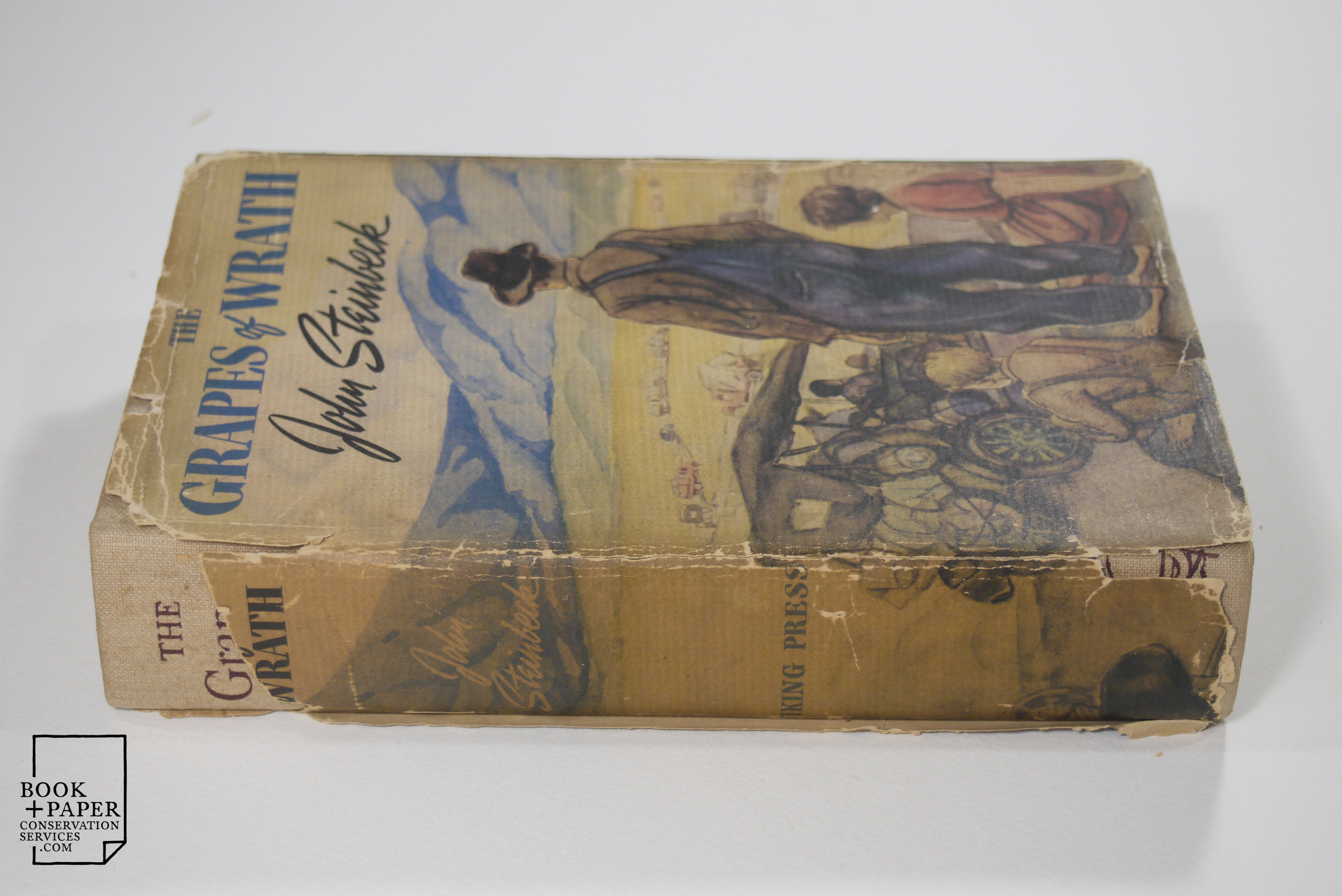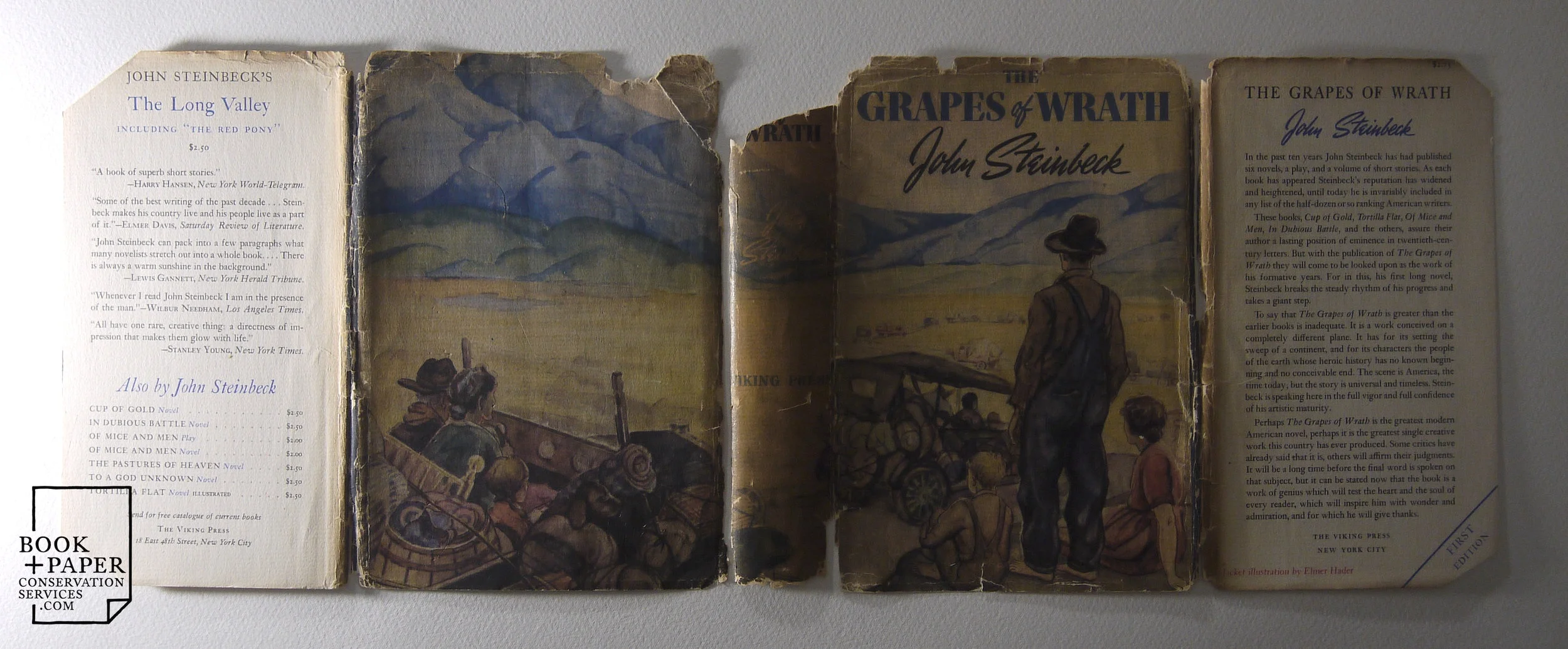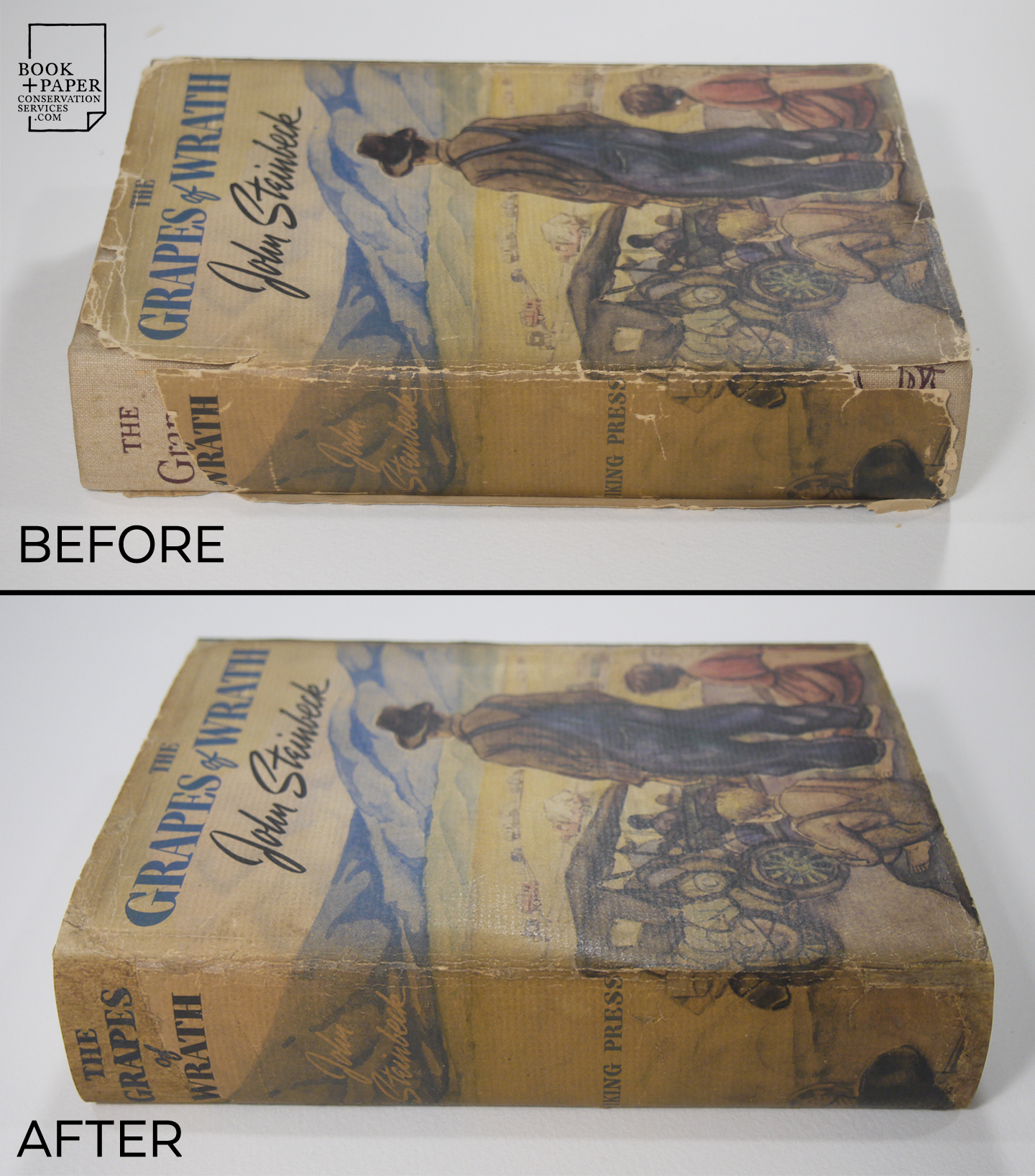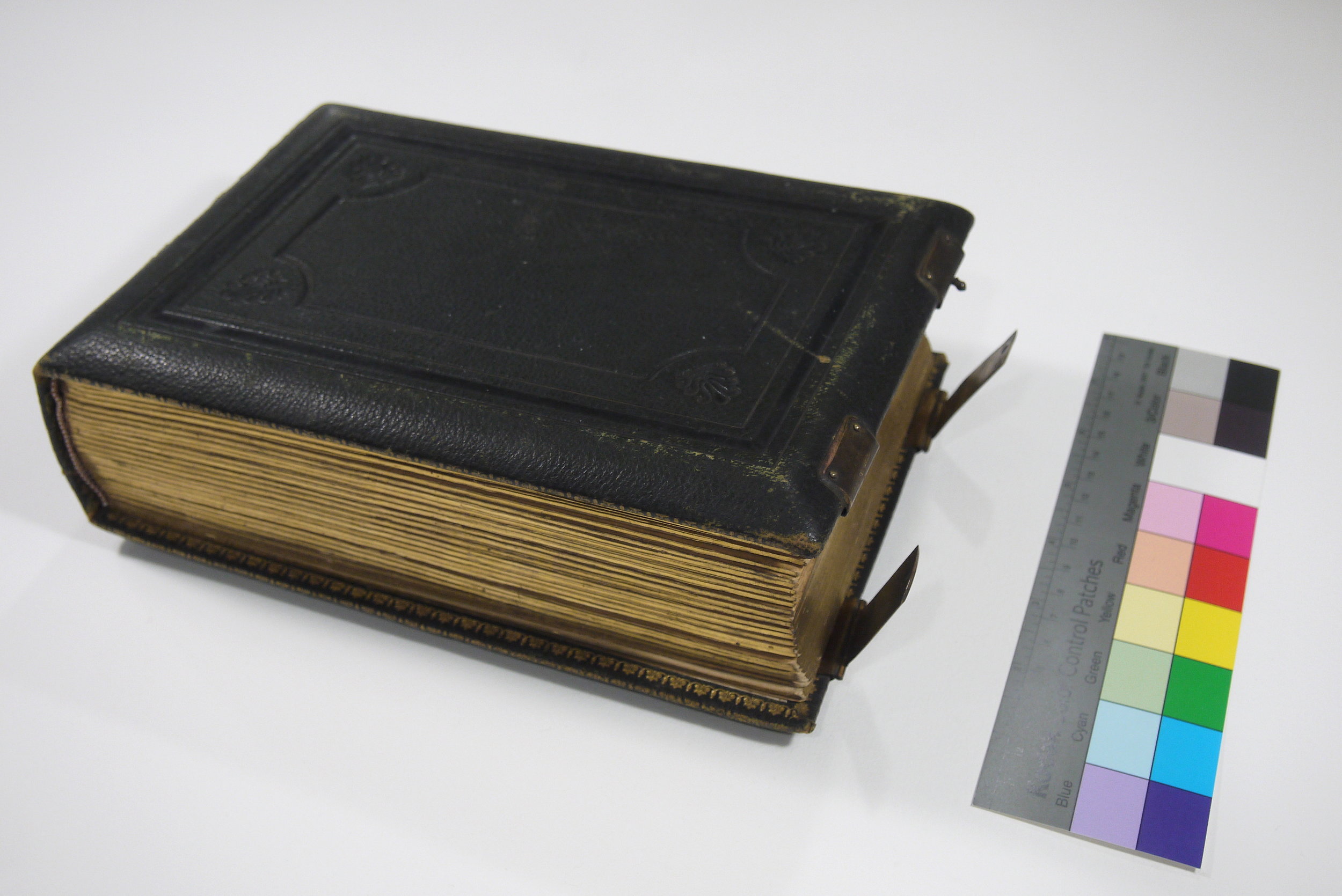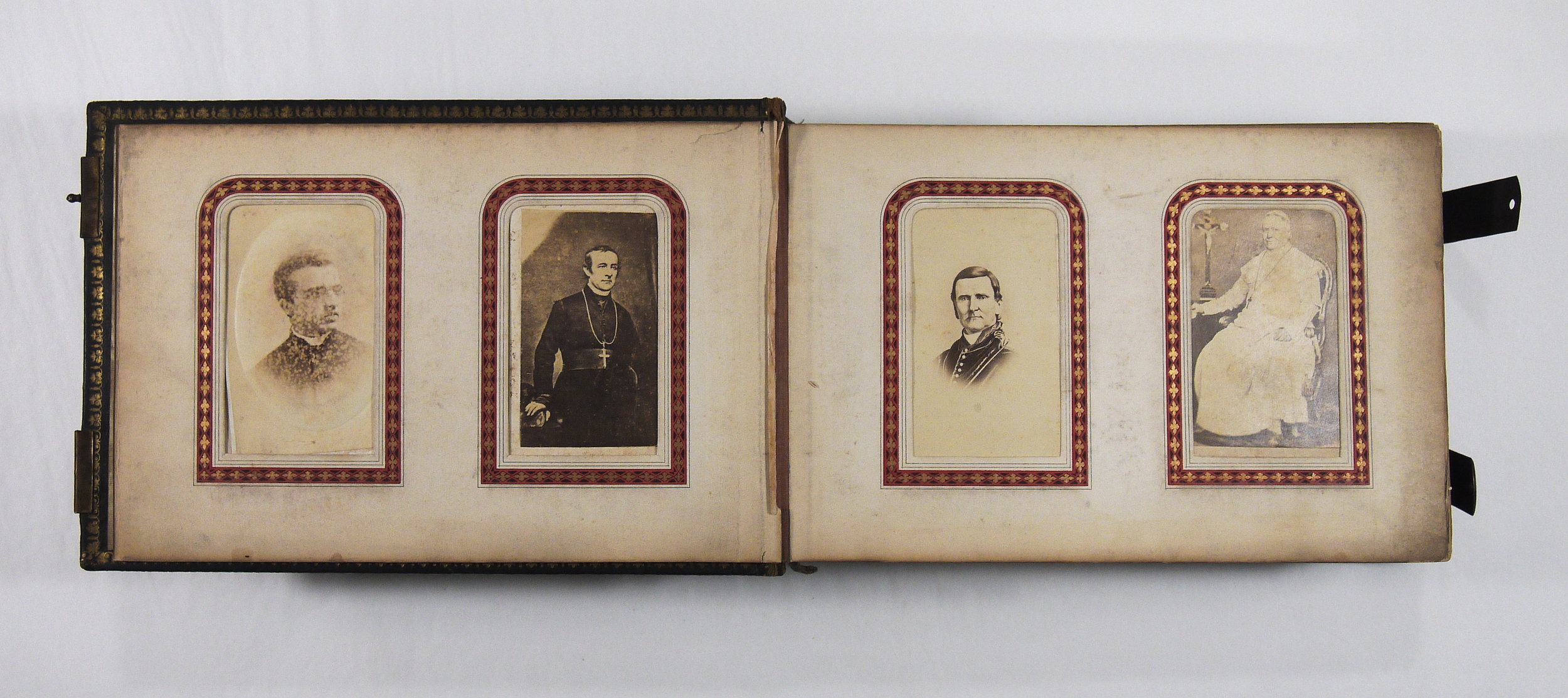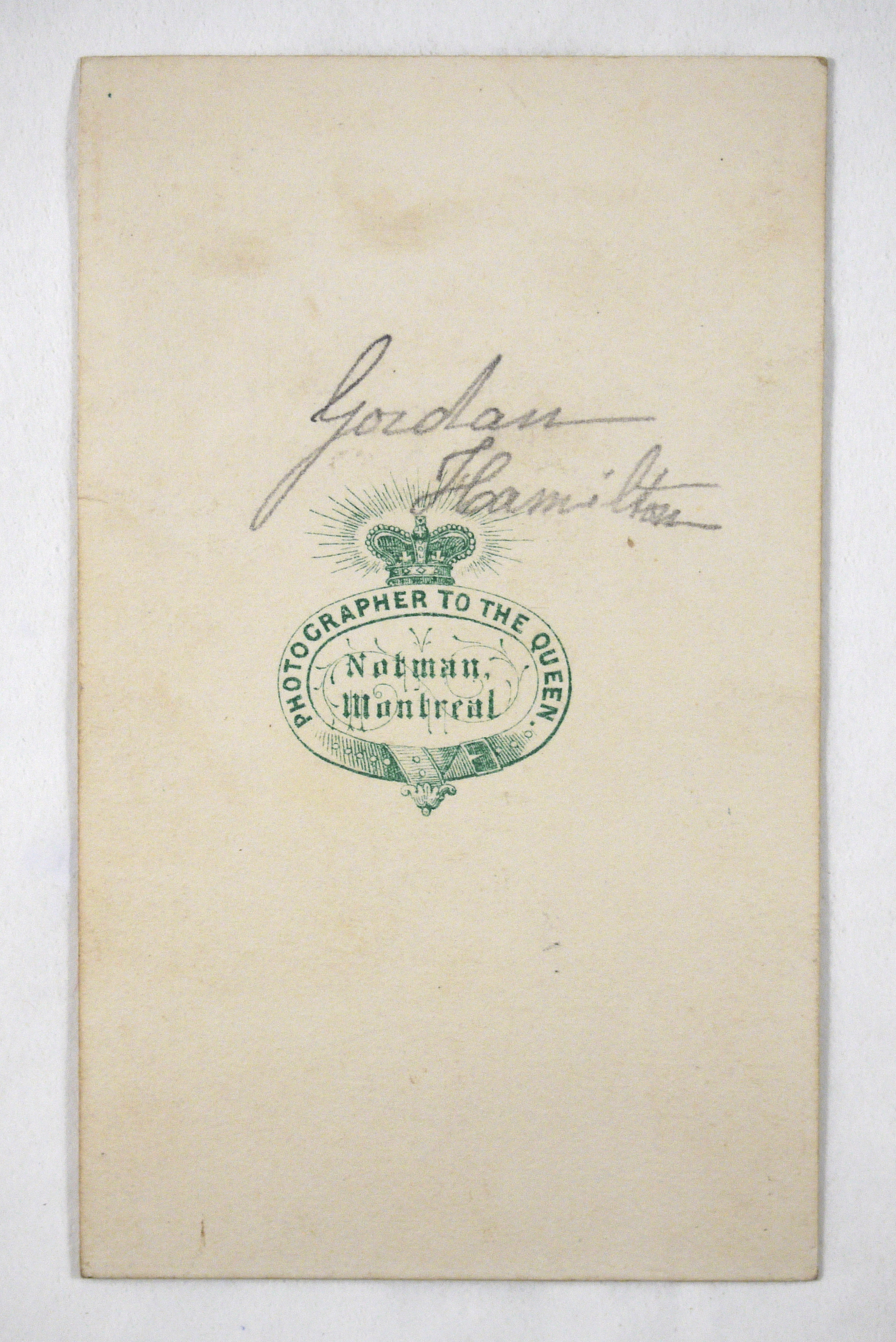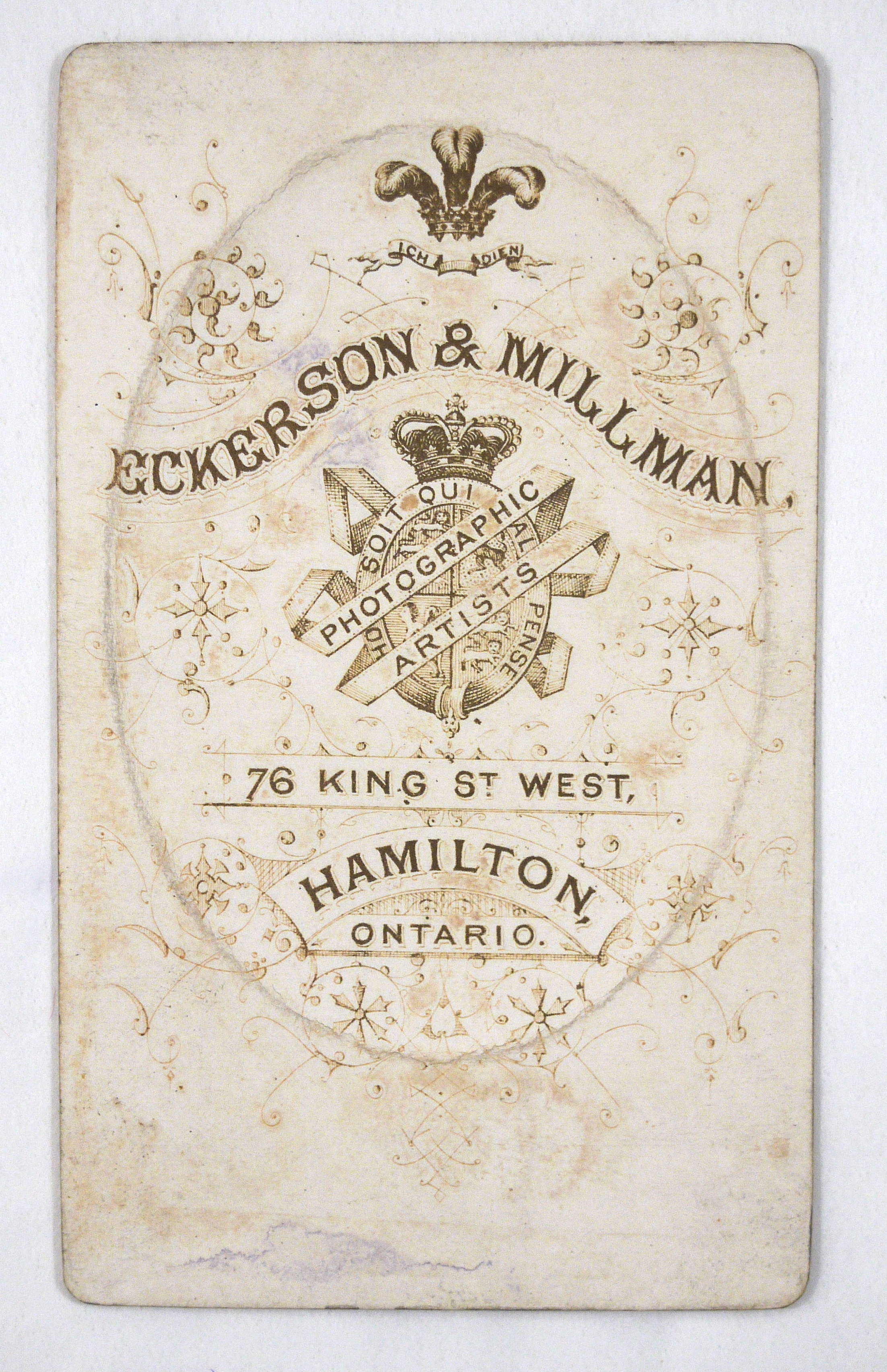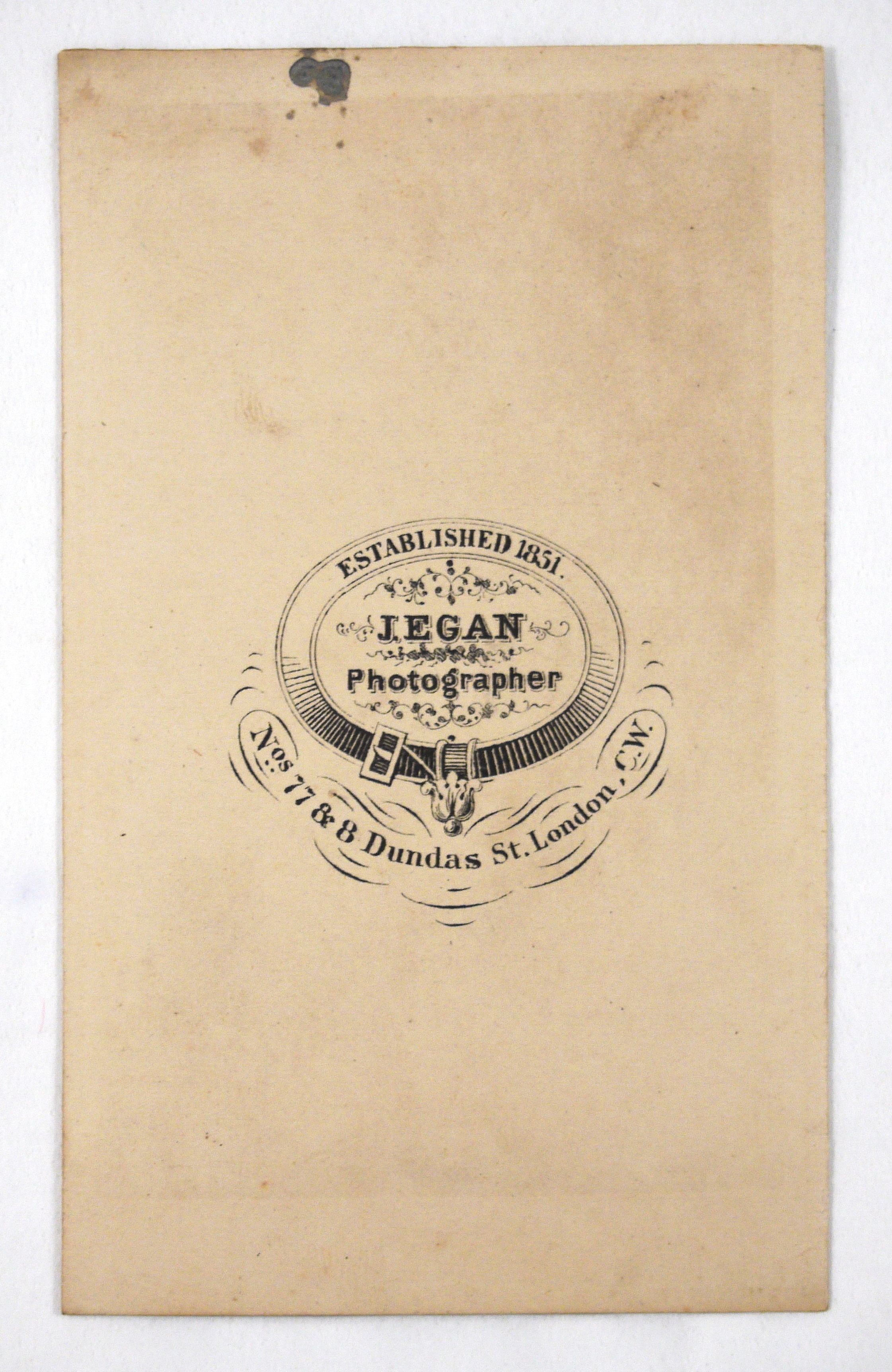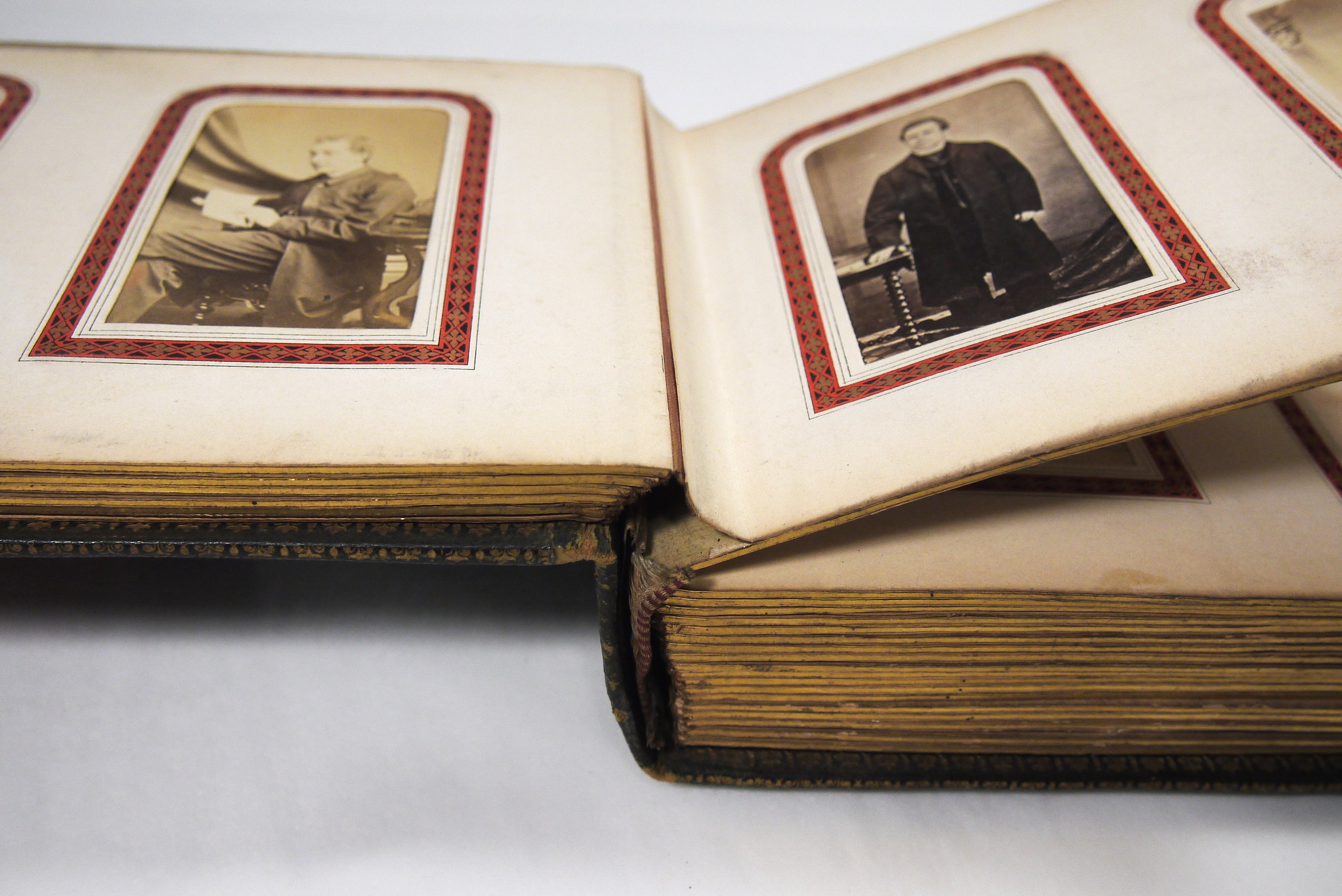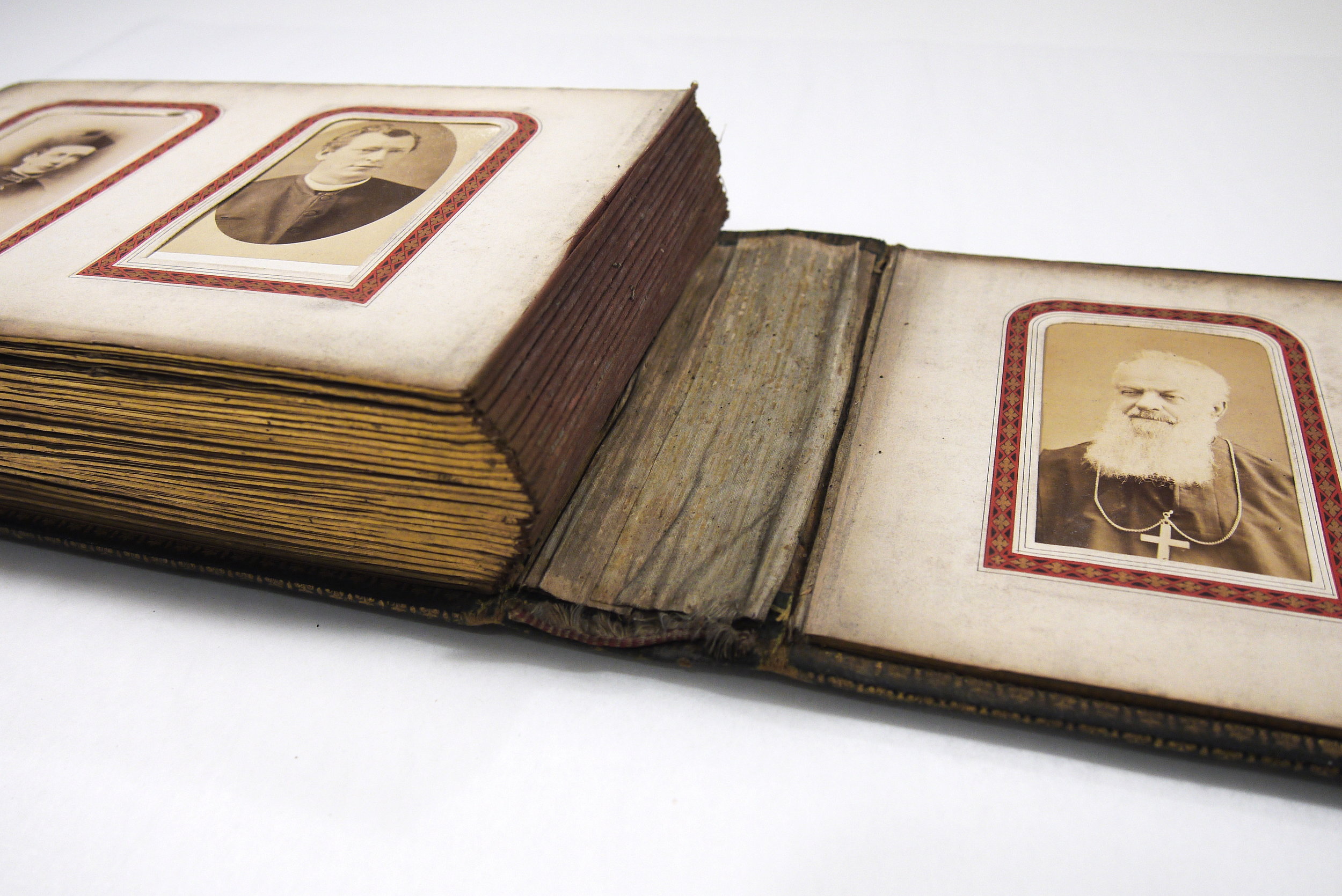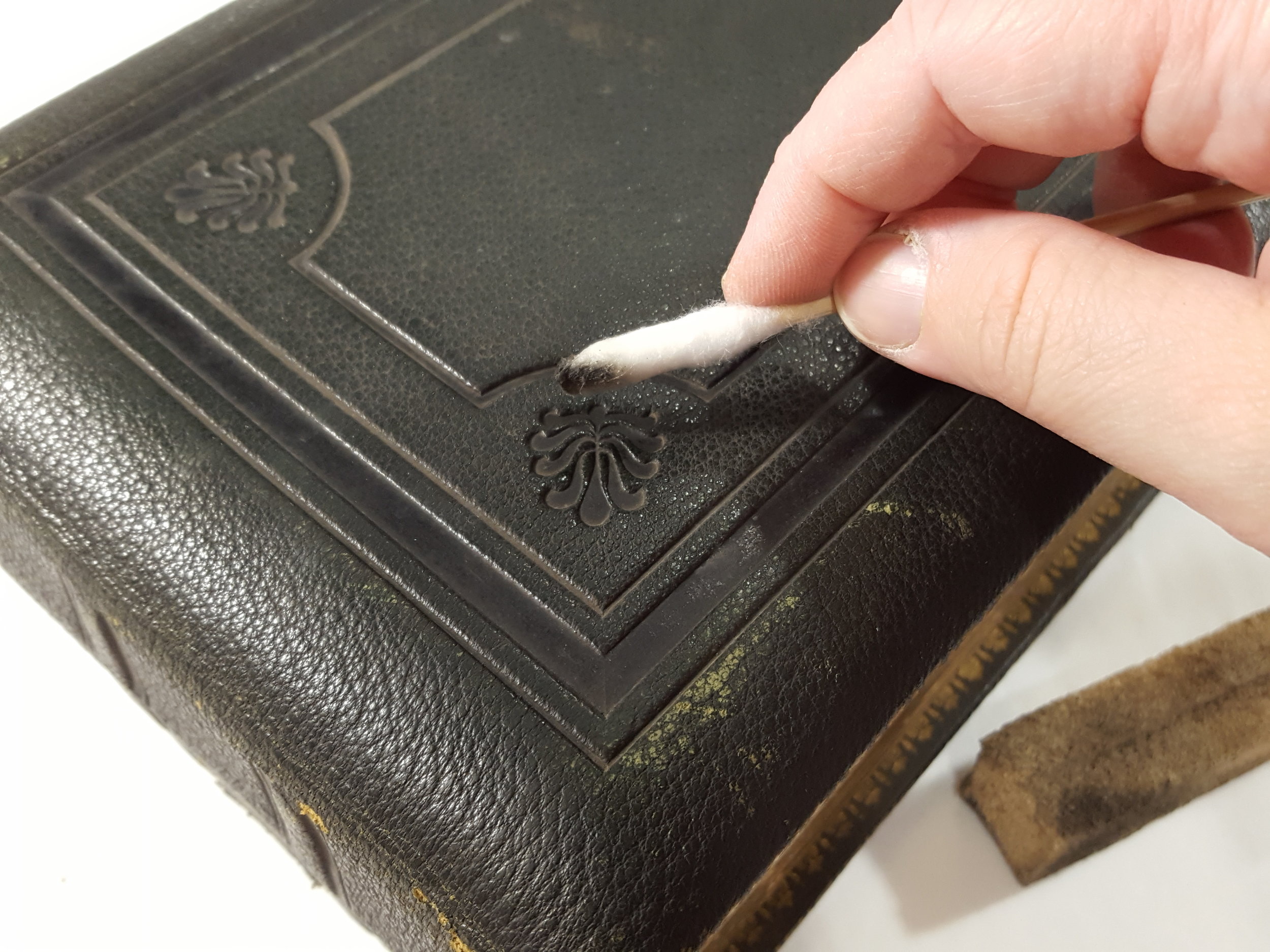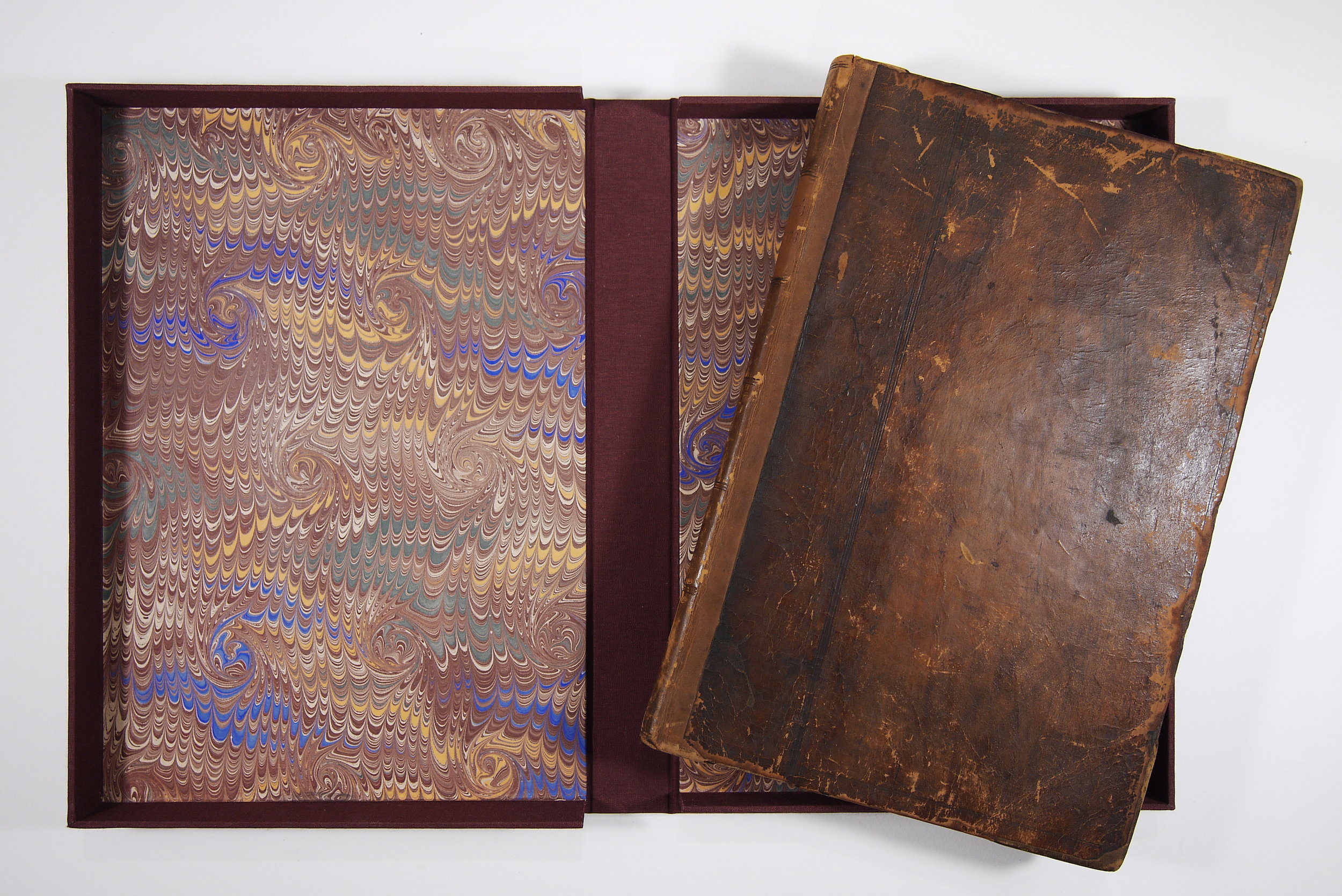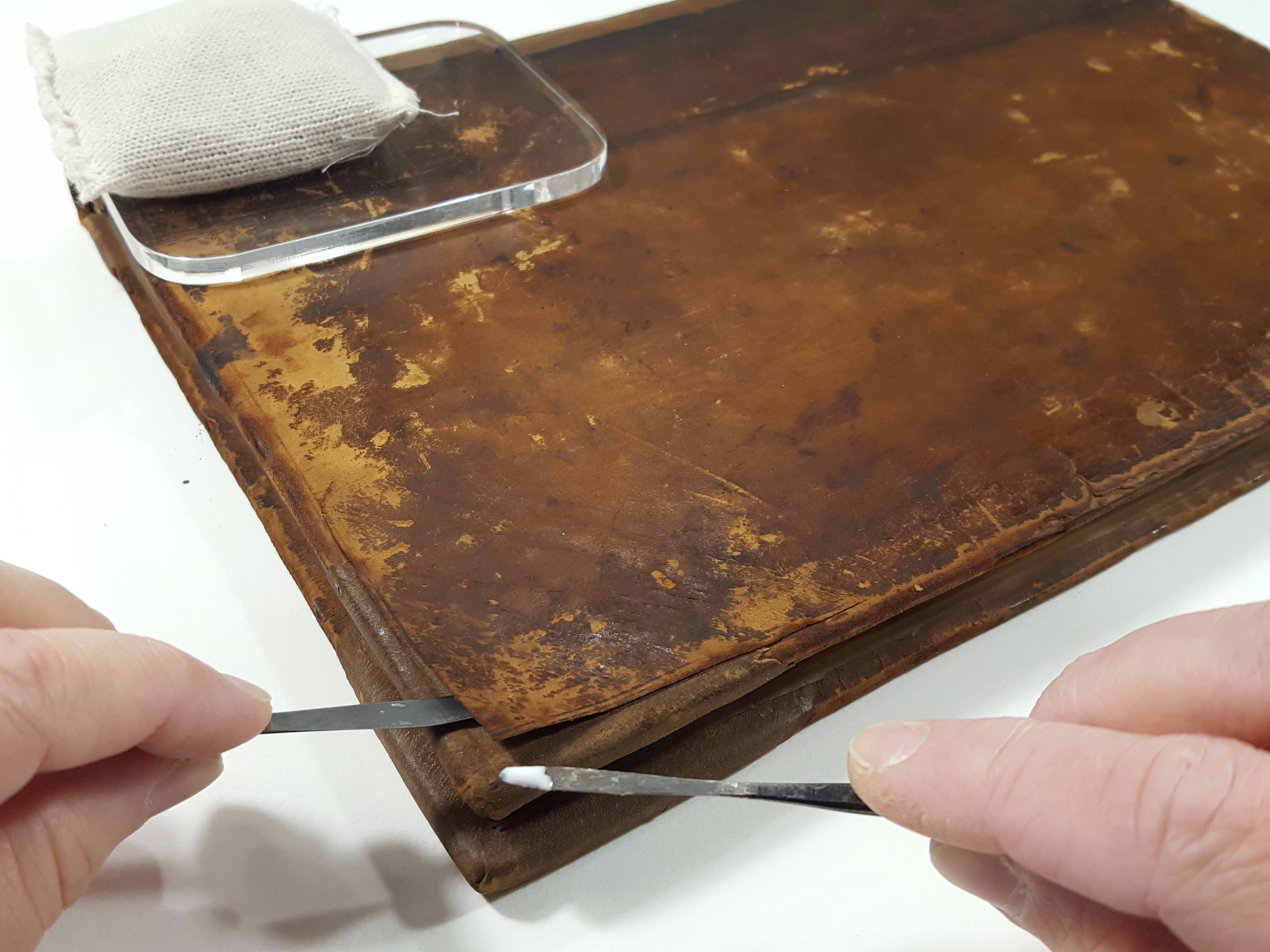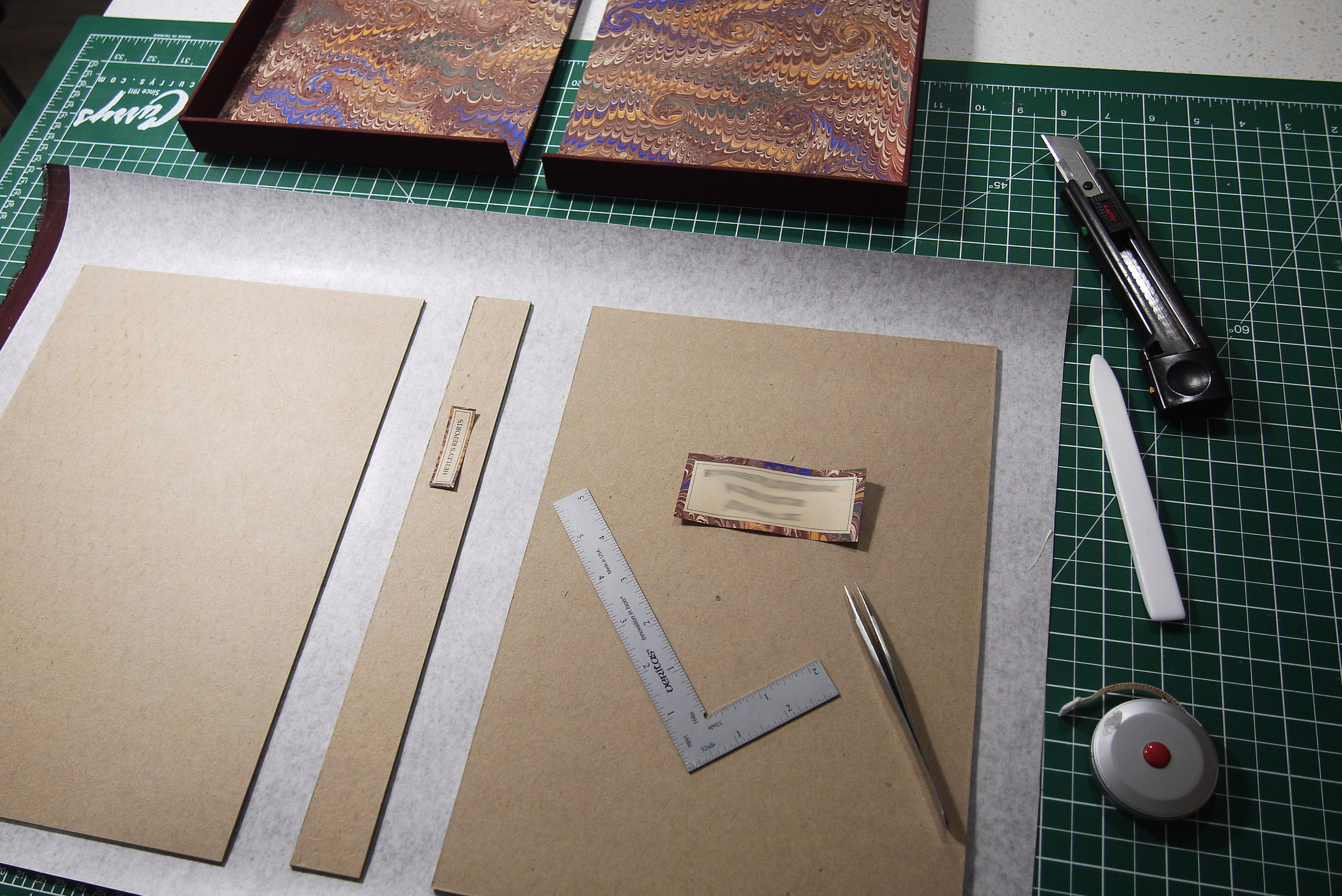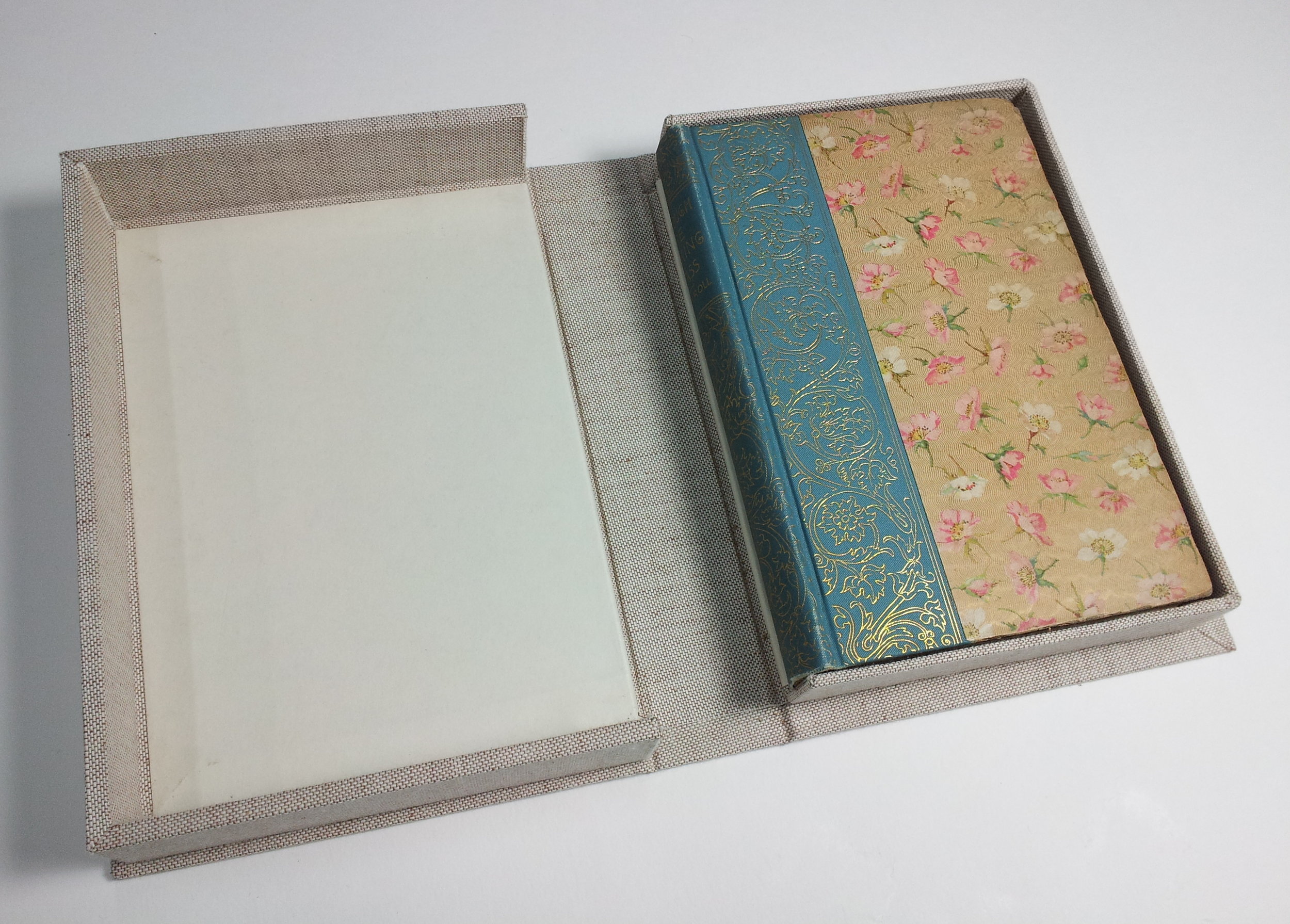Restoration of the dust jacket of a 1st edition Grapes of Wrath by John Steinbeck.
The Grapes of Wrath, 1st edition, front cover before restoration.
To collectors of modern first editions, condition of the dust jacket is of the utmost importance. The flimsy paper sheath takes the brunt of handling and exposure and is always the first to suffer. However, when a copy can’t be found (or afforded) in good condition, there is always the option of restoration.
Background
Several months ago a collector brought to us his recently acquired copy of the first edition of Steinbeck’s classic The Grapes of Wrath. The book had special meaning to him; it was the first novel he had read as a young adult and had opened his eyes to the world beyond his immediate experience, and inspired in him a civic responsibility to his local community. He felt he had made a good purchase with this copy of the first edition, but there was some damage to the dust jacket that he wanted to see improved.
restoration & ethics
Restoration work goes hand in hand with conservation, and as long as the methods used follow the Code of Ethics of the Canadian Association for Conservation of Cultural Property (CAC) and the Canadian Association of Professional Conservators (CAPC), it can be effectively applied when suitable to the situation of the artifact. In the case of rare books, if the work is done by a professional, and is properly documented and reversible, it can bring satisfaction to collectors as well as increase the value of a volume.
The Grapes of Wrath, 1st edition, front cover and spine before restoration.
The Grapes of Wrath, 1st edition, dust jacket in raking light before restoration.
Book and Paper Conservation Services was thrilled at the chance to work on this project, being fans of Steinbeck ourselves, and we knew that a little repair and inpainting would go a long way on the ratty pictorial dust jacket of the book.
TREATMENT process
An infill paper was selected that matched the weight and texture of the original, and fills were created with chamfered edges to exactly fit the jagged losses. Tears were repaired with Japanese tissue adhered with Jin Shofu wheat starch paste, and abrasions on the paper where printed colour had flaked off were sealed with a barrier layer of methyl cellulose. Working from a scale reproduction of the intact cover art, losses were traced in and then inpainted to match the original material. Abrasions and flaked areas were also inpainted to restore unity to the image, and the dust jacket was humidified to gently return it to the shape of being wrapped around the covers of the book.
Preparing for inpainting of damaged areas.
A scale copy of an intact dust jacket was used to recreate the lost areas.
Careful inpainting of losses matches the original material.
After Treatment
This type of repair works with the original materials of the specific volume to recreate an aged, but intact dust jacket, in keeping with the history of the book. A full reproduction of the jacket by mechanical means would appear brand new, and that is not the object of the collector. Instead, we restored the obvious damage but kept the patina of age of the paper, and the finished volume looks warm and authentic. The repairs however, are evident under careful examination, so there is no chance of mistaking it for an undamaged copy and faking its condition, and the thorough Conservation Treatment Report and documentation photographs will stay with the volume as a record of its restoration. If necessary, the nature of the methods and materials used means the restoration can be reversed.
After restoration, losses are filled and matched to the original material, and the dust jacket looks warm and authentic.
After restoration, losses are filled and matched to the original material, and the dust jacket looks warm and authentic.
Before and after restoration, showing the spine and front cover of 1st edition of The Grapes of Wrath by John Steinbeck.
The restored dust jacket was encapsulated in an archival mylar sleeve and fitted back around the book. The book can now be displayed and enjoyed by the collector as it was meant to appear. It has rejoined his collection where it enjoys a position of importance and is appreciated daily!
Rare Book Restoration
If you are interested in conservation or restoration of rare books in your own collection, you can contact us for further information or a cost estimate at no charge. You can also view a portfolio of our other treatments on rare books belonging to both public and private collections.




